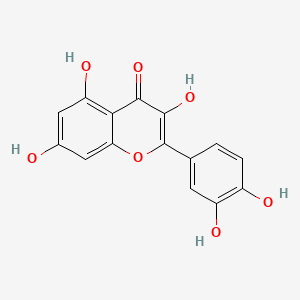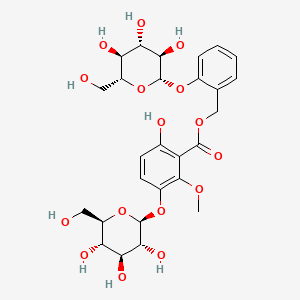To reduce swelling, pain, and infection use:
Eastern Deciduous Forest
Common Name:Witch-Hazel
Genus and Species Name: Hamamelis virginiana
Habitat: Forests containing rocky areas including stream beds and along slopes
Seasons: Limbs are available year round.
Medicinal uses: The limbs contain tannin (anti- inflammatory and anti-bacterial) and quercitin (anti-onflammatory)
Preparation: Clip off limbs and cover them in a pot with water. Bring the water to a boil. Then, cover and simmer (low boil) for 8 hours. Remove from heat and allow to cool. Finally, strain the limbs from the water and apply the tea to the affected area.
Active Chemical Ingredient: Tannin
Chemical Formula: C76H52O46
Habitat: Forests containing rocky areas including stream beds and along slopes
Seasons: Limbs are available year round.
Medicinal uses: The limbs contain tannin (anti- inflammatory and anti-bacterial) and quercitin (anti-onflammatory)
Active Chemical Ingredient: Tannin
Chemical Structure:
Chemical Structure:

2nd Active Chemical Ingredient: quercetin
2nd Chemical Formula: C15H10O7
2nd Chemical Structure:

2nd Chemical Structure:

Resources:
15 Wonderful Uses for Witch Hazel. (n.d.). Retrieved September 9, 2015, from http://www.wisebread.com/15-wonderful-uses-for-witch-hazel
Hamamelis virginiana - Natural medicine facts. (n.d.). Retrieved September 9, 2015, from http://www.naturalmedicinefacts.info/plant/hamamelis-virginiana.html
Ozark Witch-Hazel. (n.d.). Retrieved September 9, 2015, from http://mdc.mo.gov/discover-nature/field-guide/ozark-witch-hazel
(n.d.). Retrieved September 9, 2015, from https://en.wikipedia.org/wiki/Tannin
Error 500. (n.d.). Retrieved September 9, 2015, from http://www.webmd.com/vitamins-supplements/ingredientmono-294-quercetin.aspx?activeingredientid=294&activeingredientname=quercetin
Quercetin. (n.d.). Retrieved September 9, 2015, from http://pubchem.ncbi.nlm.nih.gov/compound/quercetin#section=2D-Structure
Error 500. (n.d.). Retrieved September 9, 2015, from http://www.webmd.com/vitamins-supplements/ingredientmono-227-witch hazel.aspx?activeingredientid=227&activeingredientname=witch hazel
How To Make Witch Hazel Astringent • New Life On A Homestead. (n.d.). Retrieved September 9, 2015, from http://newlifeonahomestead.com/how-to-make-witch-hazel-astringent/
Hamamelis virginiana - Natural medicine facts. (n.d.). Retrieved September 9, 2015, from http://www.naturalmedicinefacts.info/plant/hamamelis-virginiana.html
Ozark Witch-Hazel. (n.d.). Retrieved September 9, 2015, from http://mdc.mo.gov/discover-nature/field-guide/ozark-witch-hazel
(n.d.). Retrieved September 9, 2015, from https://en.wikipedia.org/wiki/Tannin
Error 500. (n.d.). Retrieved September 9, 2015, from http://www.webmd.com/vitamins-supplements/ingredientmono-294-quercetin.aspx?activeingredientid=294&activeingredientname=quercetin
Quercetin. (n.d.). Retrieved September 9, 2015, from http://pubchem.ncbi.nlm.nih.gov/compound/quercetin#section=2D-Structure
Error 500. (n.d.). Retrieved September 9, 2015, from http://www.webmd.com/vitamins-supplements/ingredientmono-227-witch hazel.aspx?activeingredientid=227&activeingredientname=witch hazel
How To Make Witch Hazel Astringent • New Life On A Homestead. (n.d.). Retrieved September 9, 2015, from http://newlifeonahomestead.com/how-to-make-witch-hazel-astringent/
To treat inflammation use:
Tall Grass Prairie
Common Name: Goldenrod
Genus and Species Name: Solidago gigantea
Habitat: prairies, openings in woods with sun, and meadows
Habitat: prairies, openings in woods with sun, and meadows
Seasons: flowers bloom June-December
Medicinal uses: Dried goldenrod flowers are used to reduce inflammation since they contain Leiocarposides.
Preparation: Steep 1-2 tsp. of the dried goldenrod flowers in a cup of hot water for 10 minutes. Then, drink the tea to reduce inflammation.
Active Chemical Ingredient: Leiocarposide
Seasons: flowers bloom June-December
Medicinal uses: Dried goldenrod flowers are used to reduce inflammation since they contain Leiocarposides.
Active Chemical Ingredient: Leiocarposide
Chemical Formula: C27H34O16
Chemical Structure:

Chemical Structure:

Resources:
(n.d.). Retrieved September 8, 2015, from http://mdc.mo.gov/discover-nature/field-guide/goldenrods
Solidago gigantea - Natural medicine facts. (n.d.). Retrieved September 8, 2015, from http://www.naturalmedicinefacts.info/plant/solidago-gigantea.html
Solidago drummondii - Plant Finder. (n.d.). Retrieved September 8, 2015, from http://www.missouribotanicalgarden.org/PlantFinder/PlantFinderDetails.aspx?kempercode=y410
Foster, S., & Duke, J. (n.d.). Peterson field guide to medicinal plants and herbs of eastern and central North America (Third ed.).
Goldenrod. (n.d.). Retrieved September 8, 2015, from http://www.altmd.com/Articles/Goldenrod--Encyclopedia-of-Alternative-Medicine
Leiocarposide. (n.d.). Retrieved September 8, 2015, from http://pubchem.ncbi.nlm.nih.gov/compound/Leiocarposide
Goldenrod. (n.d.). Retrieved September 8, 2015, from http://www.altmd.com/Articles/Goldenrod--Encyclopedia-of-Alternative-Medicine
Goldenrod (Solidago virgaurea) | Plant Profiler. (n.d.). Retrieved September 9, 2015, from http://www.sigmaaldrich.com/life-science/nutrition-research/learning-center/plant-profiler/solidago-virgaurea.html
To treat infection use:
Resources:
(n.d.). Retrieved September 8, 2015, from http://mdc.mo.gov/discover-nature/field-guide/goldenrodsSolidago gigantea - Natural medicine facts. (n.d.). Retrieved September 8, 2015, from http://www.naturalmedicinefacts.info/plant/solidago-gigantea.html
Solidago drummondii - Plant Finder. (n.d.). Retrieved September 8, 2015, from http://www.missouribotanicalgarden.org/PlantFinder/PlantFinderDetails.aspx?kempercode=y410
Foster, S., & Duke, J. (n.d.). Peterson field guide to medicinal plants and herbs of eastern and central North America (Third ed.).
Goldenrod. (n.d.). Retrieved September 8, 2015, from http://www.altmd.com/Articles/Goldenrod--Encyclopedia-of-Alternative-Medicine
Leiocarposide. (n.d.). Retrieved September 8, 2015, from http://pubchem.ncbi.nlm.nih.gov/compound/Leiocarposide
Goldenrod. (n.d.). Retrieved September 8, 2015, from http://www.altmd.com/Articles/Goldenrod--Encyclopedia-of-Alternative-Medicine
Goldenrod (Solidago virgaurea) | Plant Profiler. (n.d.). Retrieved September 9, 2015, from http://www.sigmaaldrich.com/life-science/nutrition-research/learning-center/plant-profiler/solidago-virgaurea.html
Tall Grass Prairie
Common Name: Wild onion
Genus and Species Name: Allium stellatum
Habitat: meadows, swamps, fields, and openings of dry upland forests.
Habitat: meadows, swamps, fields, and openings of dry upland forests.
Seasons: Early spring- fall (perennial)
Medicinal uses: The leaves contain quercetin which is anti-bacterial
Preparation: Crush the leaves and apply directly to wounds to prevent infection.
Active Chemical Ingredient: quercetin
Seasons: Early spring- fall (perennial)
Medicinal uses: The leaves contain quercetin which is anti-bacterial
Active Chemical Ingredient: quercetin
Chemical Formula: C15H10O7
Chemical Structure:

Chemical Structure:

Resources:
The onion plant kills E. coli bacteria. (2013, October 9). Retrieved September 9, 2015, from http://www.naturalhealth365.com/food_news/onion_bacteria.html
Allium cepa - Natural medicine facts. (n.d.). Retrieved September 9, 2015, from http://www.naturalmedicinefacts.info/plant/allium-cepa.html
Quercetin. (n.d.). Retrieved September 9, 2015, from http://pubchem.ncbi.nlm.nih.gov/compound/quercetin#section=2D-Structure
Wild Onion (Wild Pink Onion). (n.d.). Retrieved September 9, 2015, from http://mdc.mo.gov/discover-nature/field-guide/wild-onion-wild-pink-onion
Nyerges, C. (n.d.). Guide to Wild Foods and Useful Plants (p. 188,189).
To relieve more pain use:
Eastern Deciduous Forest and Tall Grass Prairie
Common Name: Purple coneflower
Genus and Species Name: Echinacea purpurea
Habitat: Prairies, roadsides, pastures, and openings in moist woods.
Seasons: Blooms May- October, Roots available year-round
Medicinal uses: The purple coneflower's roots are used to make a tincture to relieve pain.
Preparation: The crushed roots (with a mortar and pestle) are mixed in a 1:2 ratio with alcohol. After letting the combined material sit for several weeks, strain and store in a dark bottle (so sunlight does not degrade it). The tincture can be taken by mouth directly or diluted in water to drink.
Habitat: Prairies, roadsides, pastures, and openings in moist woods.
Seasons: Blooms May- October, Roots available year-round
Medicinal uses: The purple coneflower's roots are used to make a tincture to relieve pain.
Active Chemical Ingredient: Echinacoside
Chemical Formula: C35H46O20
Chemical Structure:
 Resources:
Resources:
Chemical Structure:

Resources:
Echinacea:The Art of Tincturing. (n.d.). Retrieved September 6, 2015, from http://www.motherearthliving.com/plant-profile/echinacea-the-art-of-tincturing.aspx?PageId=3
Echinacoside. (n.d.). Retrieved September 6, 2015, from http://www.lktlabs.com/products/Echinacoside-2485-101.html
Echinacea purpurea - Natural medicine facts. (n.d.). Retrieved September 6, 2015, from http://www.naturalmedicinefacts.info/plant/echinacea-purpurea.html
Purple Coneflower. (n.d.). Retrieved September 6, 2015, from http://mdc.mo.gov/discover-nature/field-guide/purple-coneflower
Echinacea:The Art of Tincturing. (n.d.). Retrieved September 6, 2015, from http://www.motherearthliving.com/plant-profile/echinacea-the-art-of-tincturing.aspx?PageId=3
Echinacoside. (n.d.). Retrieved September 6, 2015, from http://www.lktlabs.com/products/Echinacoside-2485-101.html
Echinacea purpurea - Natural medicine facts. (n.d.). Retrieved September 6, 2015, from http://www.naturalmedicinefacts.info/plant/echinacea-purpurea.html
Purple Coneflower. (n.d.). Retrieved September 6, 2015, from http://mdc.mo.gov/discover-nature/field-guide/purple-coneflower




No comments:
Post a Comment